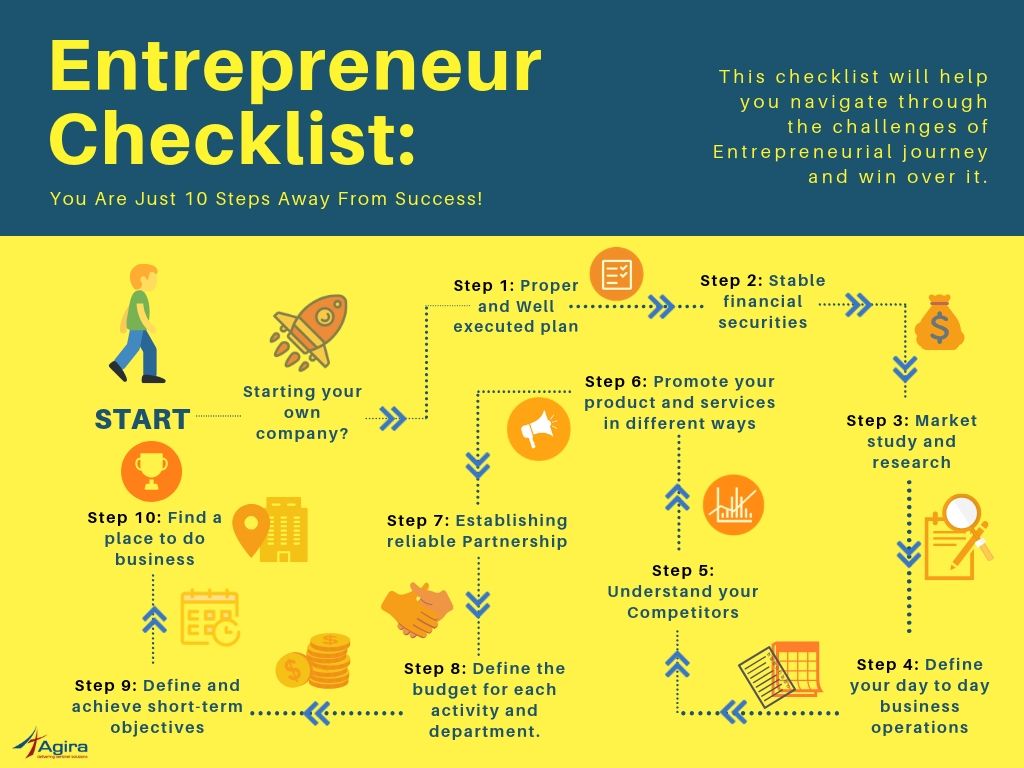Table of Contents
According to GEDI (Global Entrepreneurship and Development Index), The U.S ranks number in offering the best environment for the new entrepreneurs. Despite the risks, hundreds of people are looking to start own business. 4 million businesses have started in the year 2014 however, it’s less than 30 years ago. There are various reasons for the business to fail. Surprisingly stats show that 40% business fails due to poor demand, 20% don’t have enough source of fund, 23% fail due to the wrong team and 17% don’t have a proper workflow and business model. Only 1/3rd of the business survive over 10 years. 80% of the business survive the first year and 50% for 5 years.
Interestingly almost 84% entrepreneur starting a business from scratch, 11% purchase from others, 3% inherit and 4% transfer the ownership. Though it’s not the case with all businesses, 50% of them were started in a garage or at home and not in an office. Even the most renowned companies like Disney, Amazon, Microsoft, Apple, Google started in a basement/Garage!
The fear of failure rate in the U.S is 35%, UK 38%, China 41%, and India 50%.
Entrepreneurship is promising in the future however, working smart would lead to success!
You are 10 steps away from your goal (Success). And I mean it!
Regardless of your career path, business size, motive, previous accomplishments, we are all 10 steps away. Nothing less or more!
Let’s us say Congratulations!!!! For being an entrepreneur or aspiring to become one.
It’s not easy to build a business and this process requires a lot of struggle, hard work, and patience.
The most qualifying criteria to become a successful entrepreneur is to overcome the fear of failure, to get moving towards success.
This checklist is dedicated to all entrepreneurs (aspiring and established). After all, you need a little bit of inspiration isn’t?
Does your day revolve around thinking about?
- Success Rate
- Funding the venture
- Experience
- Building a proper team
- Client/Customer relationship
This is the good thing – Wanting to build a successful business begins with creating a checklist. Read further to arrange the necessary attributes.
In order to develop and succeed in your business, you need to ask the right questions and come up with honest answers.
Quick Checklist of Successful Entrepreneurship
- What’s the market demand for your business/product/services
- Who/ How can you define your target audience?
- Is your target audience big enough?
- Can you provide services or offer a product at competitive pricing?
- What is the ‘different thing’ you do to win the audience?
- Do you have a business plan?
- Is there a proper business leader with good knowledge and experience to lead your business?
- Who’s in your team? (Marketing, sales, development, Accounts, operations, customer care)
- How is your financial strength?

Starting your own company gives you the happiness of turning your dreams into action. There’s a vision of freedom, exiting process and procedure and you have the full control of the destiny. This checklist will help you navigate through the challenges of Entrepreneurial journey and win over it.
Step 1: Proper and Well executed plan
Did you decide to become an entrepreneur overnight? Proper planning is a solid foundation for success. It’s easy to start a business but to succeed, you need to follow a plan. Establishing a business needs a lot of discipline. Constant motivation, profits, and gains, a heart to accept challenges and failures. You may experience a winning situation at the initial stages but sooner or later, you will face the difficult reality. The ability to plan and overcome the obstacles of the business defines the success of the business.
Step 2: Stable financial securities
Be very honest here! You may have an interesting office space, expensive cabins, and setup but you need to know the financial worth of your business. A perfect estimate will give you a good idea of how long you can survive in the business. You need to include your monthly expenses, bills, salary, assets, cash reserves and all source of income to estimate the runtime of your business. It’s not ideal to spend on expensive marketing and development without having enough reserve.
Step 3: Market study and research
What do you know about your business? How effective is it in the current scenario? Who are your clients and customers? What is their problem and how can you provide a valuable solution to their problems? Market research is essential for every business. Understand your competitors, analyze their strength and weakness, learn to fulfill their needs and provide better solutions. Look for business improvements that are different from the usual methods!
Step 4: Business Operations
By understanding your business plan, financial security, and market research, you should be able to create a business vision. Now, it’s time to plan the strategies and put the plans into action. You need to define your day to day business operations that will lead to effective management. Whether you are working with a group or individually, you need to set the rules and regulations that drive you to success.
Step 5: Understand your Competitors
Competitor analysis is not new. However, you need to be one step ahead of your competitor all the time. It helps you make a buying decision, plan your business workflow and also strategize the marketing campaigns. Compare your product/services with their offering. Determine the strength and weakness of your business and look at quick ways to improve them. Change your sales or marketing approach whenever needed and know who your direct and indirect competitors are.
Step 6: Sales and Marketing efforts
Without proper sales and marketing techniques, the products you create will never meet the world! Identify your target audience and promote your product and services in different ways. Ignore the traditional ways and look at different options to enable communication between your customers. Reach out to your audience, grab their attention, engage them and repeat the process!!!
‘Viral’ – Yes, ‘Viral Advertisement’ is the term you need to look at!
Step 7: Establishing reliable Partnership
Are you an independent entrepreneur? Do you require partnership with other chains and organizations? Think about how your business flow works and approach the right team to get things done. A partnership agreement is very important and when it’s not done properly, there are chances of failure. Ensure you are clear with the goals and convey it to the partner effectively.
Step 8: Financial Controls
What’s your budget? Say a number —–
Do you meet your budget?
‘Yes’ to this question will take you closer to success. Though enhancements are important for business, you need to have a close watch on your expenses and control unwanted expenses. Define the budget for each activity and department. Ensure ‘budget constraints’ are shared across the team and you are fully responsible for the company funds and budget.
Step 9: Inspiring short-term objectives
Successful businesses are those who can define and achieve short-term objectives. Motivate your team and be active to breakdown your long-term goals into short term objectives. Trash the complexities and progress further and keep your team motivated and focused. Making little process in and around will help you succeed.
Step 10: Find a place to do business
Forget lavish office, expensive furniture and the rest. You need a place to do business. The location varies from business to business but does not overlook the factor. Most of the businesses succeed by finding an optimum place. Your infrastructure may help you to plan and progress further.
A passionate entrepreneur needs to follow the checklist, educate themselves on various phases and traces of business to become successful. It is important to learn, generate the idea, establish a working model and grow your business. Be honest with yourself and accept the challenges because it takes a lot of effort and patience to build a business and become a successful entrepreneur.










